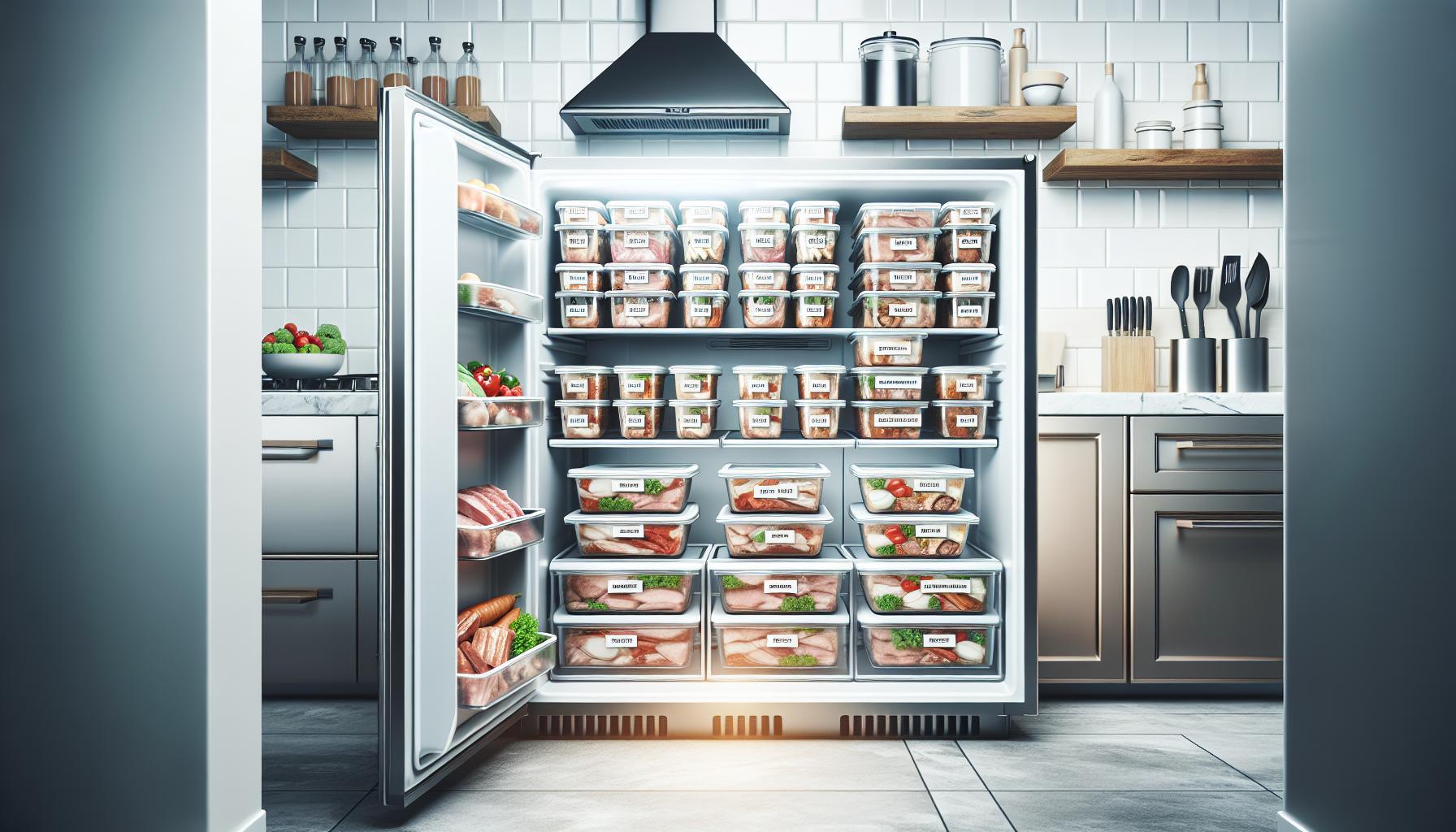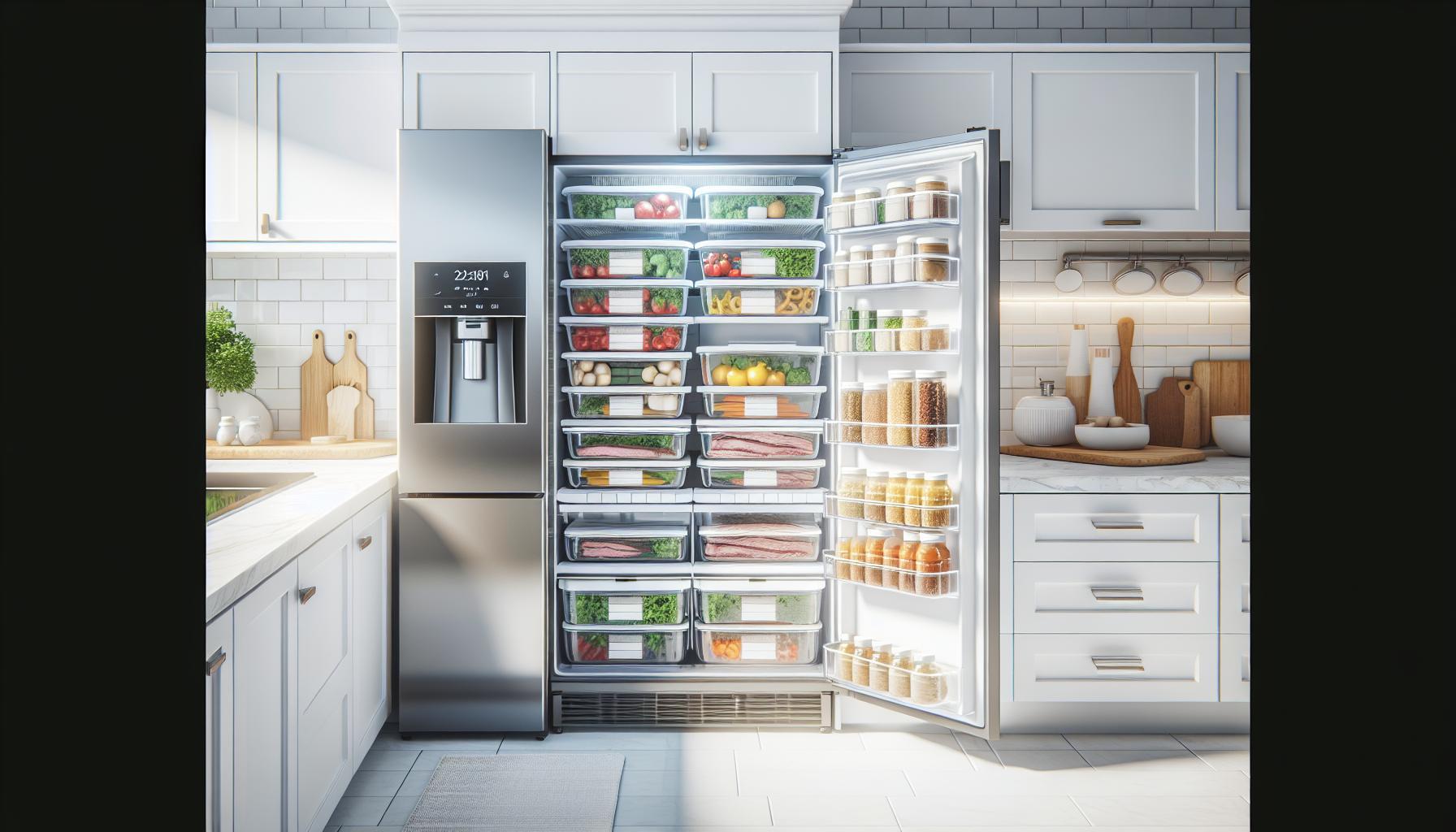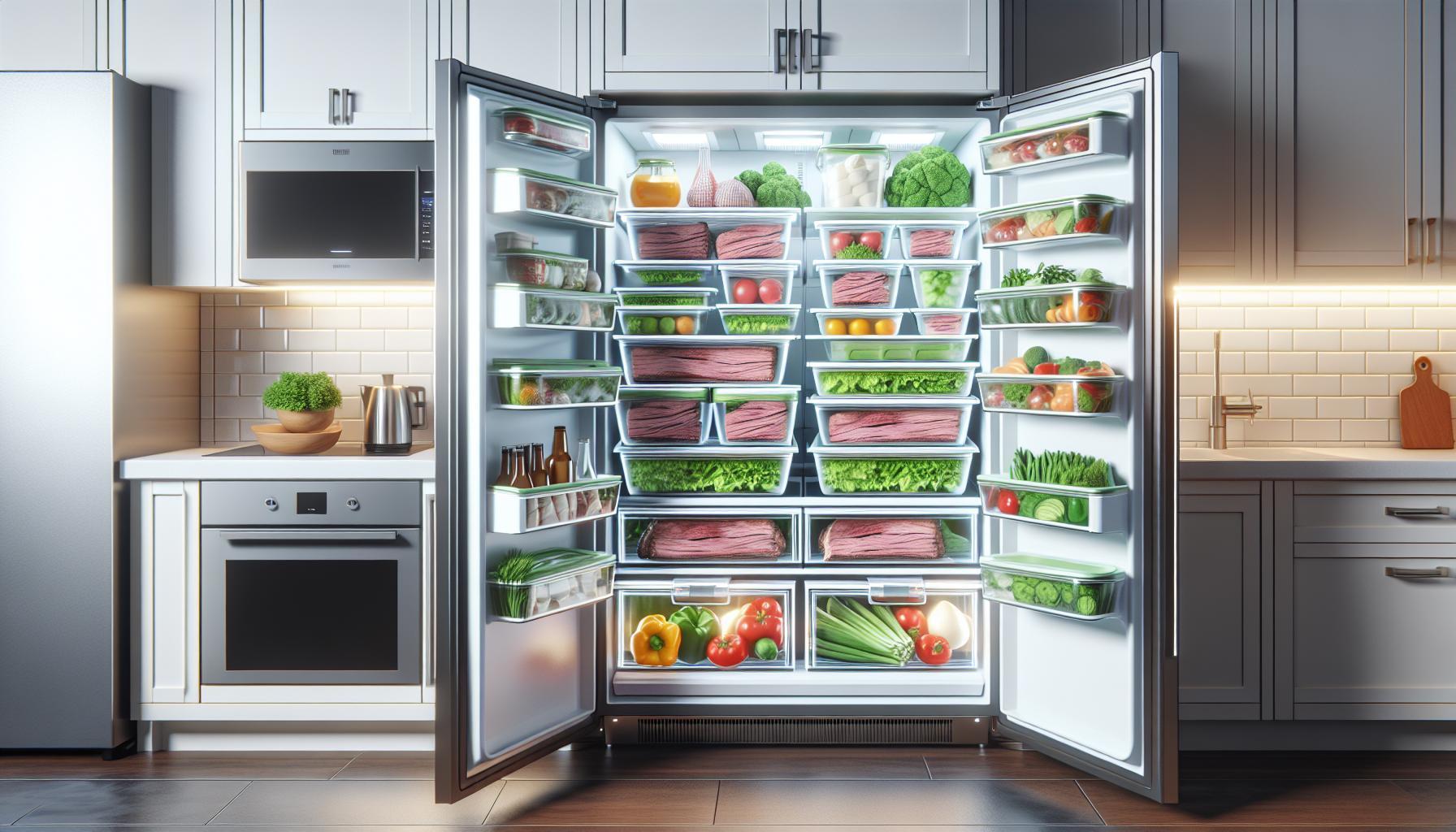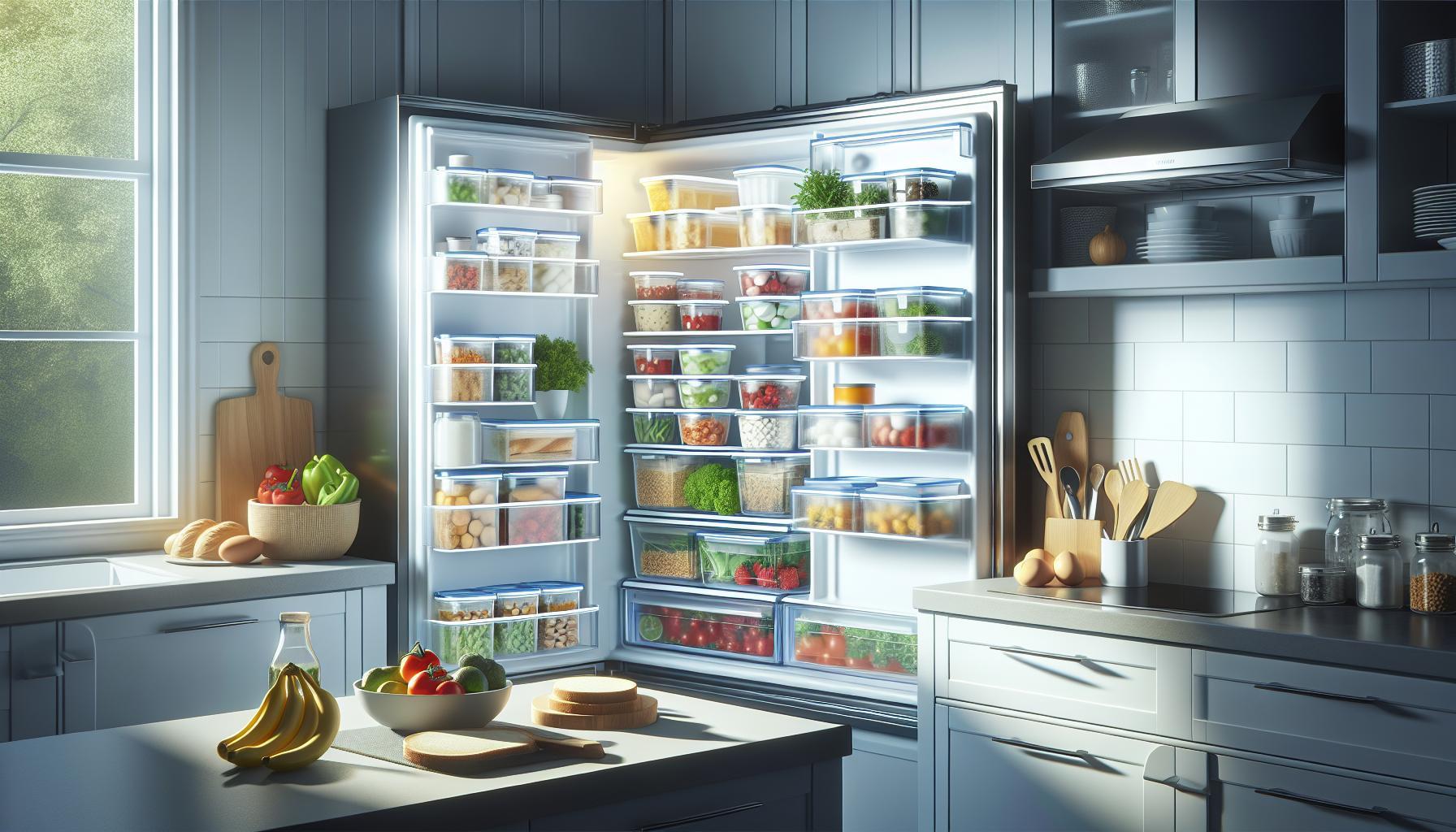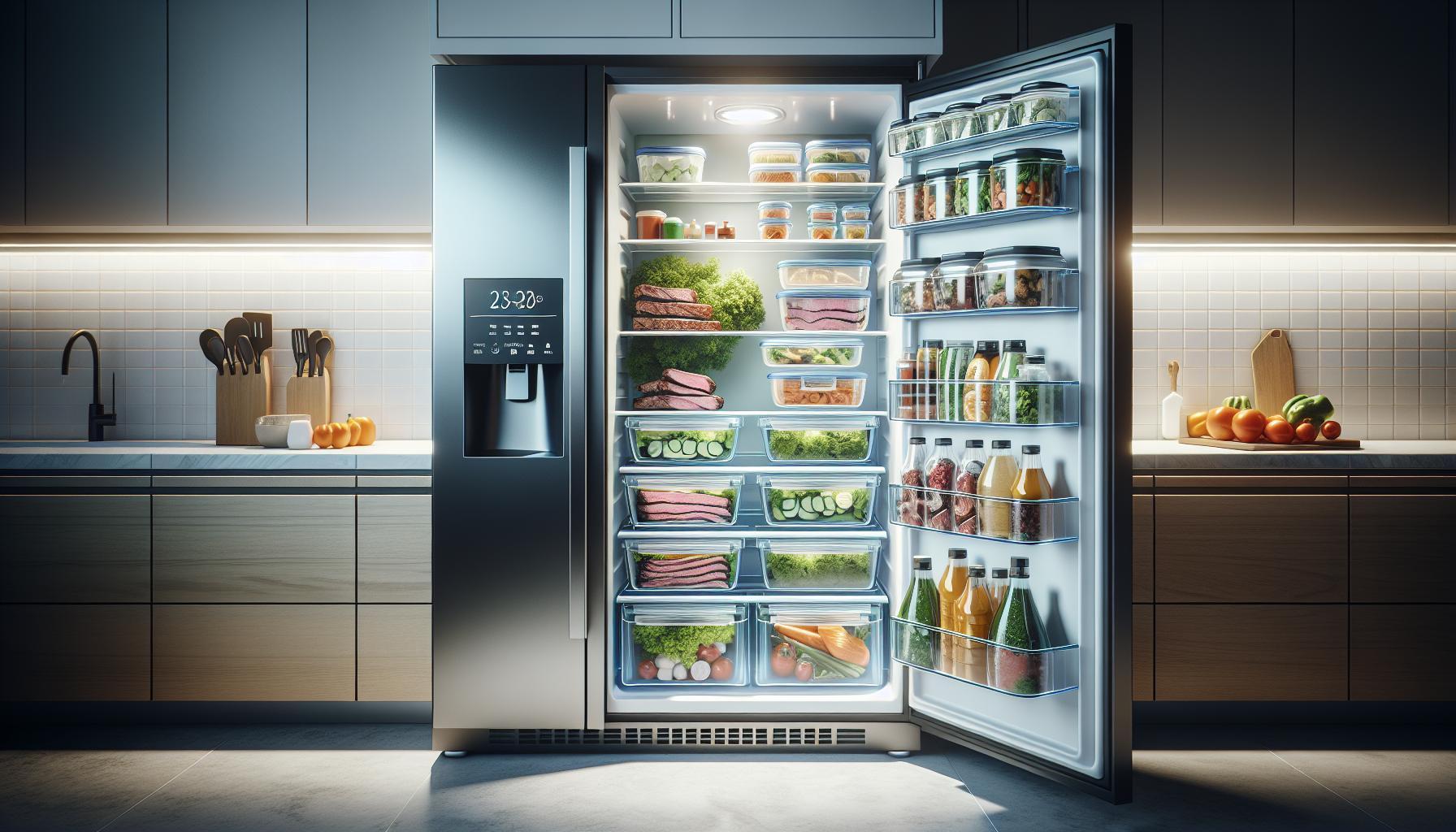Did you know that cooked meat can safely last in the freezer for several months, yet many people don’t know how to store it correctly? Understanding the longevity of cooked meat in the freezer is crucial for ensuring both food safety and quality. Improper storage can lead to spoilage, waste, and even health risks.
In this guide, we’ll delve into the best methods for storing cooked meat to maximize its lifespan while maintaining flavor and texture. Equipped with these safe storage tips, you can confidently manage your leftovers, make meal planning easier, and minimize waste. Whether you’re a busy parent or an enthusiastic home cook, knowing how long your cooked meat stays good in the freezer will help you make informed decisions and enjoy your meals without worry.
How Long Can You Freeze Cooked Meat?
When it comes to freezing cooked meat, knowing how long you can safely store it is crucial for maintaining both flavor and safety. In general, cooked meat can be frozen for a considerable amount of time without compromising quality. Most cooked meats will retain their best taste and texture for about 2 to 6 months in the freezer, depending on the type of meat and how well it’s wrapped.
For instance, lean meats, such as chicken breast, hold their quality for around 4 to 6 months. On the other hand, fatty meats like duck or lamb can be stored for about 2 to 3 months before they start to develop freezer burn or lose flavor. It’s essential to package the meat tightly in airtight containers or heavy-duty freezer bags to prevent air from entering, which can lead to freezer burn and degrade the quality.
To summarize the recommended storage times for different types of cooked meat:
| Type of Cooked Meat | Optimal Freezer Time |
|---|---|
| Chicken or Turkey | 4 to 6 months |
| Beef | 4 to 12 months |
| Pork | 4 to 6 months |
| Lamb | 2 to 6 months |
| Fish | 2 to 6 months |
By adhering to these guidelines, you can enjoy your cooked meats later while ensuring they remain safe and delicious. Always remember to label your packages with the date they were frozen, and when in doubt, check for signs of spoilage before consumption.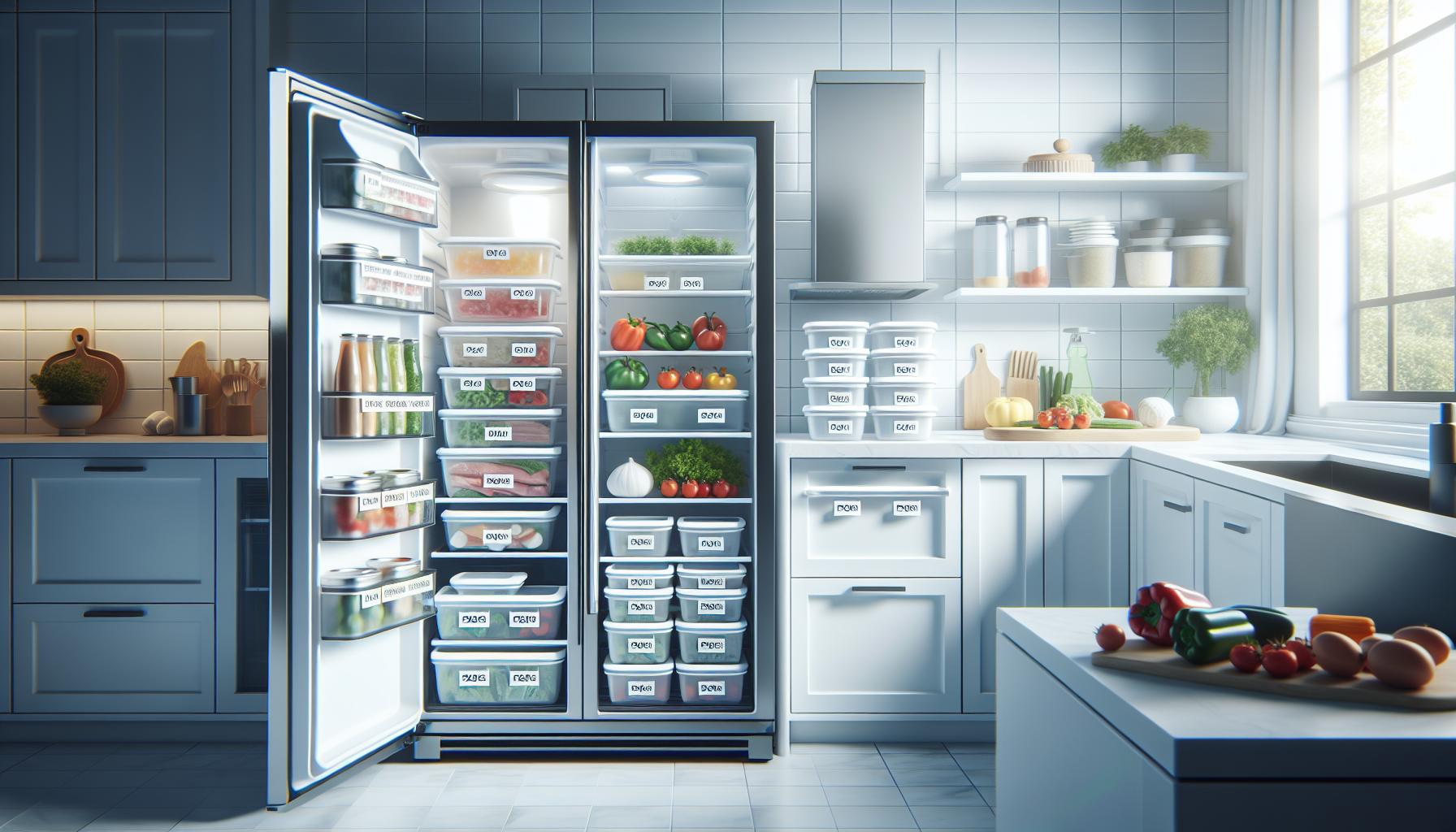
Best Practices for Freezing Cooked Meat
When freezing cooked meat, ensuring that it retains its quality and safety involves following several key practices. First and foremost, never freeze meat that has already been left at room temperature for more than two hours, as this can promote bacterial growth. Begin by allowing the cooked meat to cool completely before packaging it. This step prevents condensation inside the packaging, which can lead to freezer burn and degraded quality.
Using the right packaging is crucial for maintaining the meat’s integrity in the freezer. Use airtight containers or heavy-duty freezer bags, ensuring you remove as much air as possible before sealing. Utilizing a vacuum sealer can provide the best results by eliminating air, thereby extending the meat’s freshness. For additional protection against freezer burn, consider wrapping the meat in plastic wrap before placing it in a freezer bag or container.
Timely storage is also a primary factor. Label each package with the contents and the date it was frozen. This practice not only helps in keeping track of how long the meat has been stored but also makes it easier to use older items first, adhering to the “first in, first out” rule. Depending on the type of meat, follow optimal storage times such as 4 to 6 months for poultry and pork or up to 12 months for beef.
Lastly, ensure your freezer is set at 0°F (-18°C) or lower. Regularly checking the temperature can help in maintaining the desired conditions for safe meat storage. By adhering to these best practices, you can enjoy your cooked meats at a later time without compromising on taste or safety.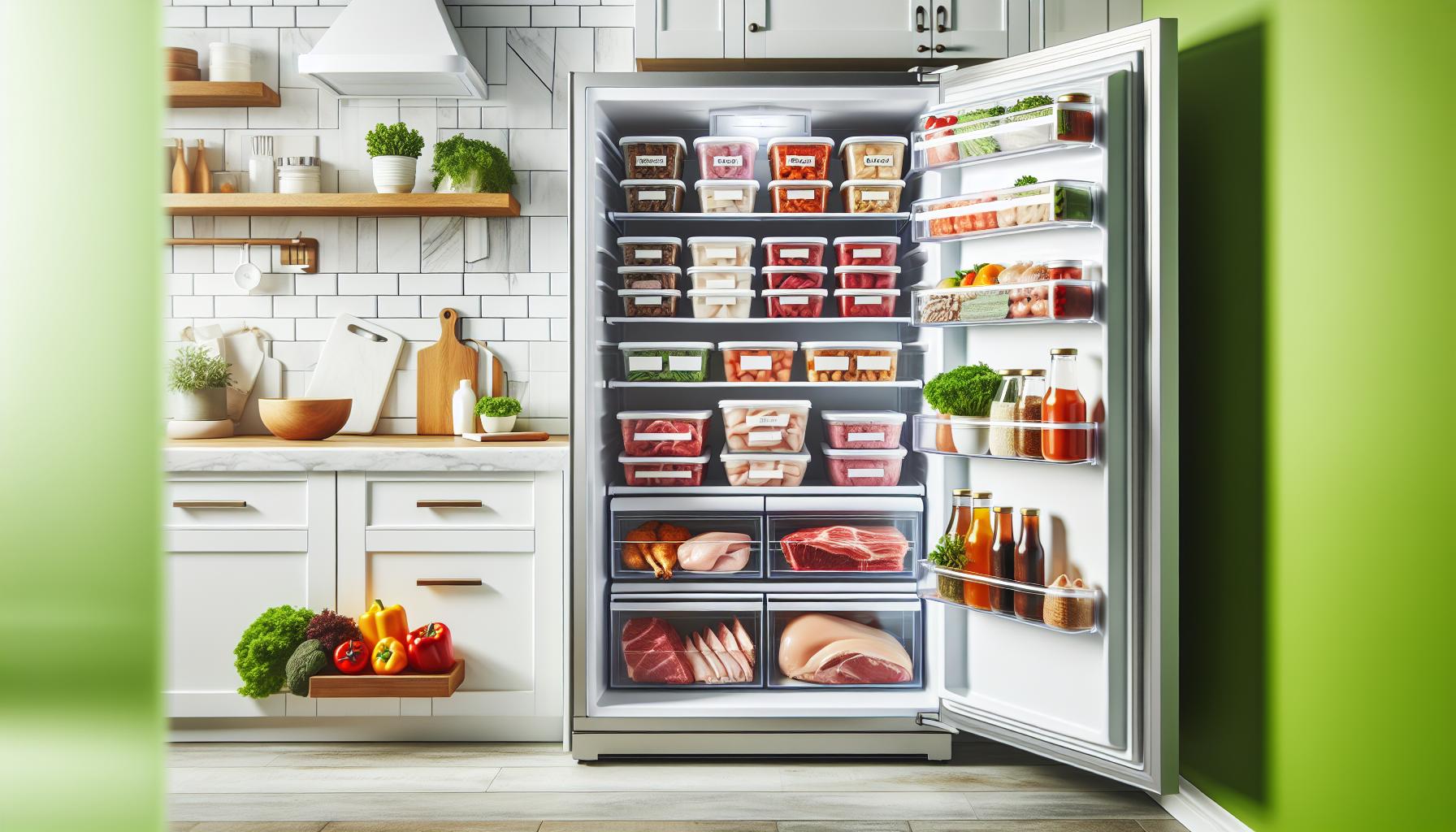
Storage Times for Different Types of Cooked Meat
While freezing cooked meat is an effective way to prolong its shelf life, each type of meat has different optimal storage times to ensure quality and safety. Understanding these timeframes helps prevent waste and ensures you always have flavorful, safe meals ready to reheat.
Cooked poultry, such as chicken or turkey, can be stored in the freezer for 4 to 6 months. To retain the best quality, ensure the meat is securely wrapped in airtight packaging. Ground meats, whether pork, beef, or chicken, generally have a similar storage duration of 3 to 4 months due to their higher surface area, which can lead to quicker flavor loss and freezer burn. Roasted or cooked beef can typically be stored for 4 to 12 months, depending on the cut, with tougher cuts lasting longer due to their intrinsic moisture levels.
Here’s a quick breakdown of storage times for various cooked meats:
| Type of Meat | Recommended Storage Time |
|---|---|
| Cooked Poultry | 4 to 6 months |
| Cooked Ground Meats | 3 to 4 months |
| Cooked Beef (Roast, Steak, etc.) | 4 to 12 months |
| Cooked Pork | 2 to 6 months |
| Cooked Lamb | 3 to 6 months |
By adhering to these guidelines, you can enjoy the convenience of having cooked meats on hand without compromising on flavor or safety. Always remember to label your packages with the date frozen to help monitor storage times effectively, ensuring that you use the oldest items first.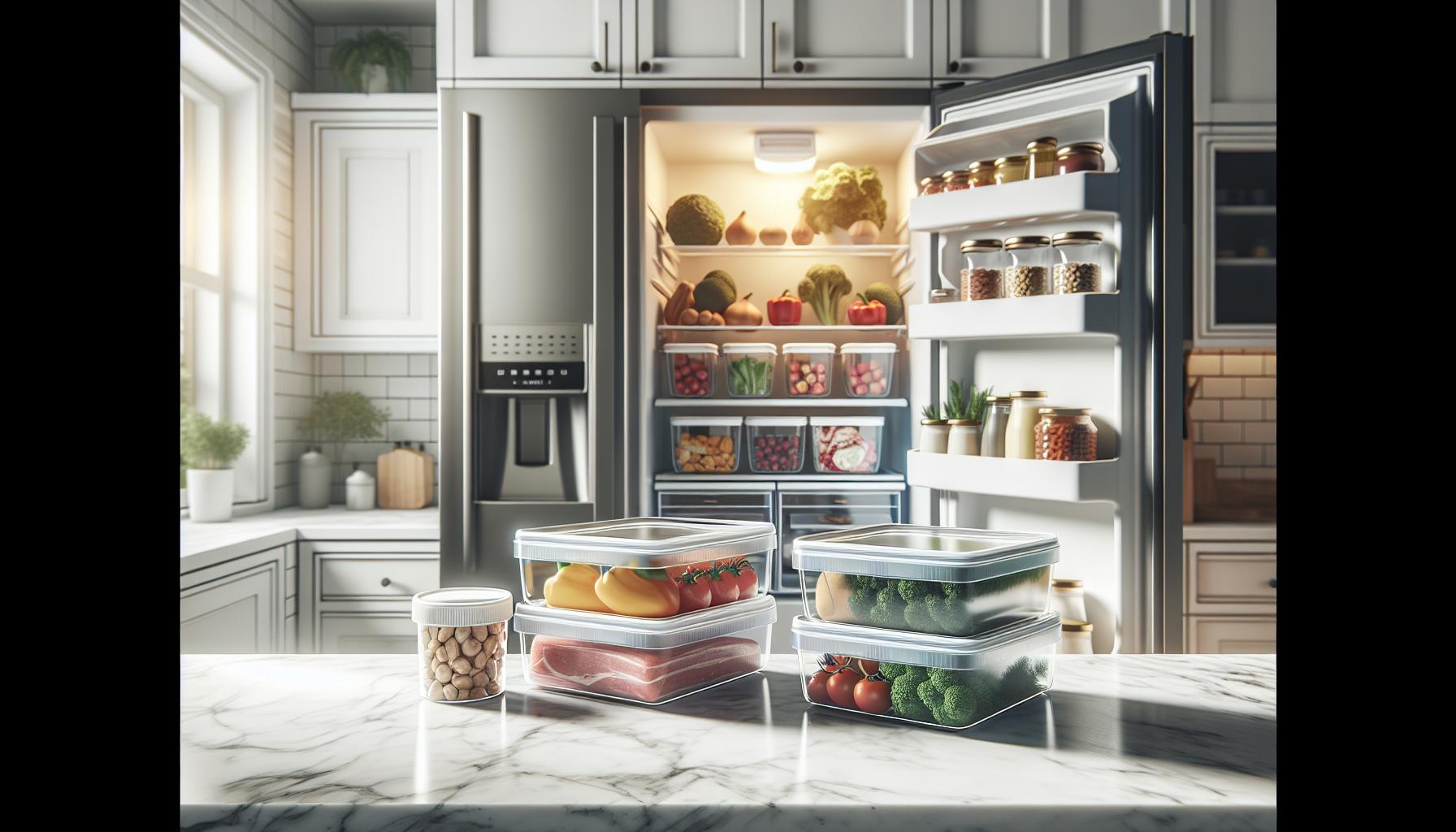
Signs Your Frozen Cooked Meat Has Gone Bad
When it comes to preserving food, freezing cooked meat is a reliable method. However, it’s essential to be aware of signs indicating that your frozen cooked meat may have gone bad. Even when stored properly, frozen meat can lose its quality or, in some cases, become unsafe for consumption. Utilizing your senses-sight, smell, and touch-can help you determine the meat’s condition.
A common sign that cooked meat has deteriorated is freezer burn, characterized by dry spots or a layer of ice crystals on the surface. While it may not necessarily make the meat unsafe to eat, it does affect the taste and texture. These grayish-brown patches result from exposure to air, signaling that the meat may not have been wrapped securely. If you encounter excessive freezer burn, it’s best to discard the meat or trim those areas before cooking.
Another important factor to assess is the odor. Once thawed, if the meat emits a sour, rancid, or off smell, it’s a clear indication that spoilage has occurred. Trust your nose; if it smells unpleasant, it’s better to err on the side of caution and dispose of the meat. Additionally, observing any unusual texture-such as an excessively slimy or tacky surface-can signal bacterial growth, which poses health risks.
In summary, by staying vigilant and aware of the signs of spoilage, you can ensure that the cooked meat you thaw and consume is not only safe but also of high quality. Regularly checking your frozen items and following proper storage practices will help maintain their flavor and safety throughout their frozen life.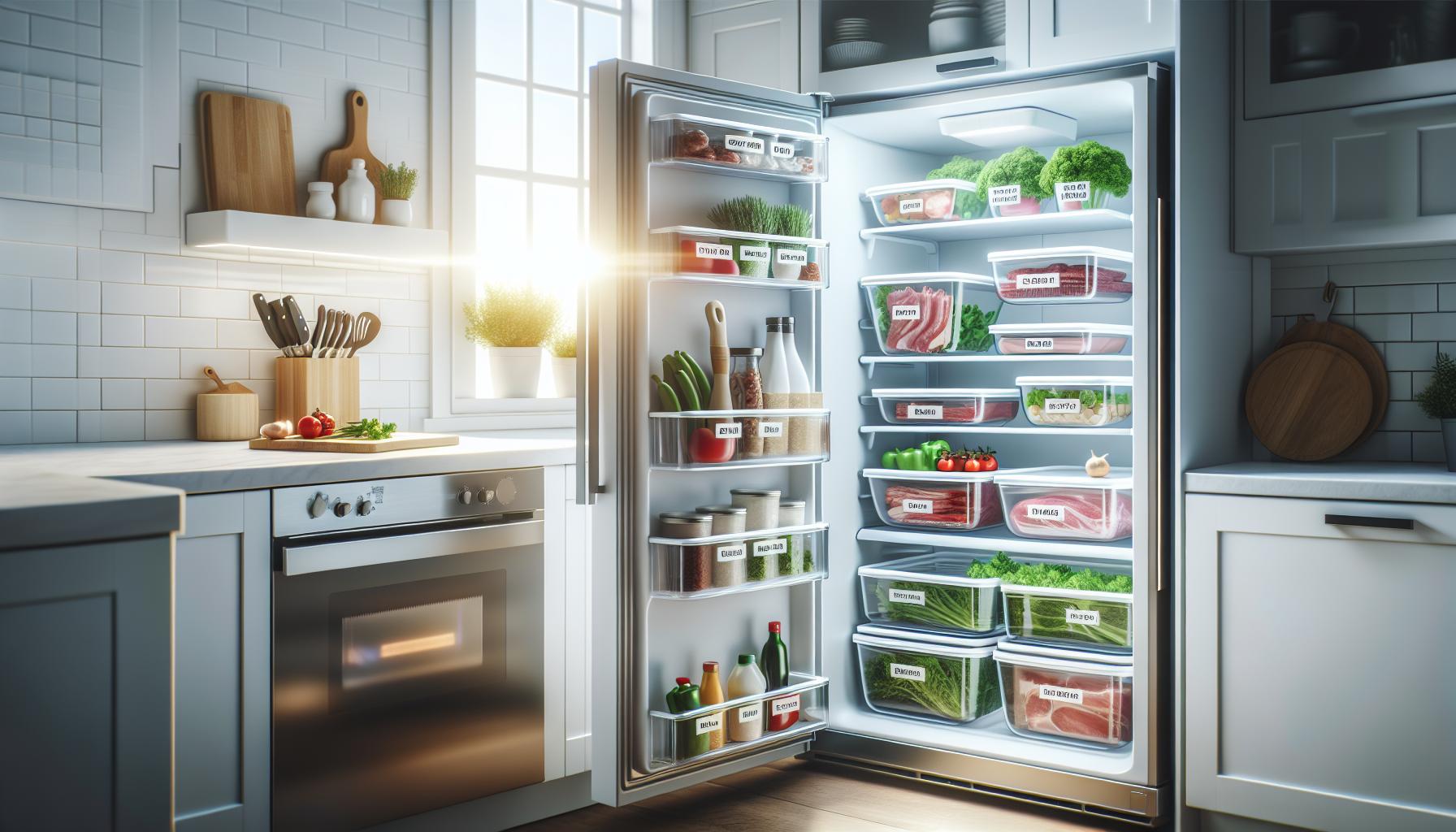
Thawing Cooked Meat Safely: Methods and Tips
Thawing cooked meat properly is crucial to maintaining its quality and ensuring safety. Rapid temperature changes can lead to the growth of harmful bacteria, which thrive at temperatures between 40°F and 140°F (4°C and 60°C). To minimize these risks, utilize one of the following methods for thawing:
Recommended Thawing Methods
- Refrigerator Thawing: The safest way to thaw cooked meat is in the refrigerator. Simply move the meat from the freezer to the fridge and leave it there for several hours or overnight, depending on the size of the portion. For instance, a large roast may take a full day, while smaller cuts might thaw within a few hours. This method keeps the meat at a safe temperature throughout thawing.
- Cold Water Thawing: If you need to thaw meat more quickly, place it in a leak-proof plastic bag and submerge it in cold water. Change the water every 30 minutes to ensure the meat continues to thaw effectively. This method can reduce thawing time significantly, usually taking an hour or less for small portions.
- Microwave Thawing: For the quickest method, use the microwave’s defrost function. Make sure to follow your microwave’s instructions, as different models may require different settings for thawing. Be aware that some parts of the meat may start to cook, so it’s advisable to cook immediately after thawing.
Thawing Tips
When thawing cooked meat, always plan ahead. The refrigerator method is the most effective way to preserve quality and flavor, allowing you to enjoy your leftovers safely. Avoid thawing meat at room temperature, as this can expose it to the danger zone for too long. Whatever method you choose, remember that once thawed, cooked meat should never be refrozen unless it has been cooked again. Monitor the thawing process closely, ensuring the meat maintains a safe temperature to enjoy your meals without health risks.
Reheating Frozen Cooked Meat: Safe Techniques
Reheating frozen cooked meat requires careful attention to ensure it is both safe to consume and retains its flavor and texture. The general rule is to reheat to an internal temperature of 165°F (74°C) to effectively kill any bacteria that may have developed during storage. Utilizing appropriate methods not only enhances food safety but also preserves the quality of the meat.
One of the most effective techniques for reheating cooked meat is using an oven. Preheat the oven to 350°F (175°C), and place the meat in an oven-safe dish covered with aluminum foil. This method allows for even heating while preventing the meat from drying out. Depending on the size of the portion, reheating can take anywhere from 20 to 45 minutes. It’s advisable to use a meat thermometer to check for the desired temperature at the thickest part of the meat.
Microwaving is another quick option, but it requires careful monitoring to ensure even heating. Cut the meat into smaller, uniform pieces to promote even reheating. Place the meat in a microwave-safe dish, cover with a lid, or use microwave-safe wrap to retain moisture. Use medium power settings and heat in short intervals, checking the temperature frequently to avoid overcooking.
Slow cooking is a fantastic method for larger cuts like roasts or whole chickens. Simply place the frozen meat in a slow cooker, add some moisture (broth or sauce), and set it on low for several hours. This method not only reheats the meat slowly but also infuses it with flavor, resulting in a tender and juicy dish.
Regardless of the reheating method chosen, it’s essential to avoid leaving meat at room temperature for extended periods, as this can allow harmful bacteria to thrive. Always plan to consume reheated meat promptly, and if there are leftovers again, ensure these are refrigerated within two hours of reheating. By following these safe techniques, you can enjoy your frozen cooked meat without compromising on safety or taste.
Top Mistakes to Avoid When Freezing Cooked Meat
Freezing cooked meat can be a smart way to extend its shelf life while preserving both flavor and nutrition. However, many people make common mistakes that can compromise the quality and safety of their stored meat. Understanding these pitfalls may help you enjoy your leftovers without worry.
One significant mistake is failing to properly cool cooked meat before freezing. Placing hot meat directly into the freezer can raise the internal temperature, potentially affecting the temperature of surrounding items and creating a breeding ground for bacteria. Instead, allow your meat to cool to room temperature for about two hours before packing it up for freezing. To expedite the process, you can cut larger pieces into smaller portions.
Another frequent error is neglecting to use airtight packaging. Freezer burn can occur when meat is exposed to air, leading to dry patches and off-flavors. Always wrap your cooked meat in plastic wrap, foil, or use vacuum-sealed bags designed for freezing. Labeled containers work well too, but make sure to minimize airspace to keep your meat fresh.
Additionally, many people overlook the importance of labeling their frozen meat. Without proper labels, it can be challenging to keep track of what you have stored and when it was frozen. Use a permanent marker to write the date and contents on each package. This simple step is essential for maintaining a good rotation system, ensuring older items are used first to prevent wasted food.
Lastly, consider proper portioning. Freezing meat in single servings can help you avoid defrosting too much at once and reduce the risk of refreezing leftovers, which is not always safe. This way, you can easily take out only what you need without compromising the entire batch. By being mindful of these common mistakes, you’ll be able to maximize the quality and safety of your frozen cooked meat, making mealtime easier and more enjoyable.
Can You Refreeze Cooked Meat? What You Need to Know
While it might seem convenient to refreeze cooked meat after thawing, it’s essential to proceed with caution. Refreezing cooked meat is safe if it was thawed in the refrigerator and has not been left out at room temperature for more than two hours. When meat is thawed in the fridge, it stays at a safe temperature (below 40°F or 4°C), which minimizes the risk of bacteria growth. However, if it was thawed using the microwave or hot water, it’s better to cook it right away and avoid refreezing, as these methods can cause parts of the meat to enter the temperature danger zone.
When considering the quality of refrozen meat, understand that repeated freezing and thawing can impact its texture and overall flavor. Moisture loss occurs every time meat goes through a freeze-thaw cycle, making it drier upon reheating. To further mitigate quality issues, try to divide cooked meat into smaller portions before freezing it initially. This way, when you’re ready to eat, you can take out only what you need without affecting the rest of your supply.
Adopting proper storage practices can enhance safety and maintain the quality of your cooked meat. Always label your meat with the date frozen, and strive to consume it within the recommended timeframe: generally, cooked meat can be stored in the freezer for 2 to 6 months, depending on the type. Utilizing airtight containers or vacuum-sealed bags will also protect against freezer burn and extend the meat’s shelf life.
In summary, while refreezing cooked meat can be safe, ensure you follow the guidelines around thawing methods and keep in mind the potential changes in texture and flavor. Making intentional choices about how you freeze and handle your meat will lead to more enjoyable meals and less waste.
Labeling and Organizing Your Freezer for Easy Access
Keeping your freezer organized is key to maximizing its efficiency and ensuring your cooked meats stay safe and delicious. A well-structured freezer not only makes it easier to find what you need, but it also helps you track how long each item has been stored. To start, always use airtight containers or vacuum-sealed bags for any cooked meat. These methods prevent freezer burn and maintain quality, while allowing you to stack items neatly.
Labeling is essential for an effective organization system. Each time you freeze cooked meat, take a moment to attach a label noting the contents, the date it was frozen, and recommended use-by dates based on the type of meat. This simple practice can prevent confusion and reduce food waste. For example, cooked chicken can be stored for about 4 months in the freezer, while ground beef typically lasts around 3 months. By noting these specifics on your labels, you can prioritize consuming older items first.
Additionally, consider grouping similar items together. Create a section for poultry, another for red meats, and yet another for leftovers. This categorization not only speeds up your cooking process but also simplifies meal planning. If your freezer has shelves or bins, try to designate each one for specific types of cooked meat or meal components.
Lastly, keep a written inventory of your freezer contents near the door or on the front of the appliance. This list should include the names of the items, their frozen dates, and any pertinent details regarding their storage times. Doing so will facilitate easy access and help you stay on top of when you need to use or replace items in your freezer. Following these organizational and labeling tips will ensure your frozen cooked meats remain safe, easily accessible, and tasty for your next meal.
Benefits of Properly Freezing Cooked Meat
Properly freezing cooked meat not only extends its shelf life but also preserves its flavor and nutritional value. This practice offers several advantages for both meal planning and food safety, making it an essential technique in modern kitchens. By taking the time to freeze cooked meat correctly, you can minimize food waste, save money, and ensure that your meals maintain their quality when stored for later use.
One of the most significant benefits of freezing cooked meat is the convenience it provides. Having a variety of ready-to-eat meals on hand can make weeknight dinners simpler and quicker. When meat is cooked and frozen, it can last anywhere from three to six months, depending on the type of meat. For instance, cooked chicken can retain its best quality for about four months, while ground beef typically lasts around three months in the freezer. This allows you to prepare large batches of meals, portion them out, and freeze them, giving you healthy options available at a moment’s notice.
Moreover, proper freezing helps prevent spoilage and the risk of foodborne illnesses. By freezing cooked meat promptly and correctly, you stop the growth of bacteria and slow down enzymatic reactions that can lead to degradation. Using airtight packaging, like vacuum-sealed bags or airtight containers, not only prevents freezer burn but also keeps the meat’s texture and flavor intact. Implementing a system of labeling and organizing your frozen items ensures that you’re using them within the recommended timeframes, thereby maintaining both safety and satisfaction in your meals.
In summary, the benefits associated with properly freezing cooked meat extend beyond just long-lasting storage. It enhances your meal planning efficiency, reduces waste, and plays a crucial role in food safety. With careful attention to how you prepare, package, and label your cooked meats, you can enjoy delicious, nutritious meals straight from your freezer whenever you need them.
How to Maintain Meat Quality in the Freezer
To ensure that cooked meat retains its quality while frozen, attention to detail during both preparation and storage is essential. Freezing creates an environment where microbial growth is halted, but improper freezing practices can still lead to loss of texture, flavor, and nutritional quality. Following several key guidelines can help maintain the integrity of your cooked meat during its time in the freezer.
First, cool cooked meat quickly before freezing to minimize the time it spends in the temperature danger zone (between 40°F and 140°F). This should ideally be within two hours of cooking. Placing the meat in shallow containers can expedite this process. Once cooled, wrap the meat in airtight packaging such as vacuum-sealed bags or heavy-duty aluminum foil. These methods are crucial in preventing freezer burn, which can dry out the exterior and diminish taste. Another effective strategy includes using freezer-grade plastic containers that fit snugly around the meat, minimizing air exposure.
To further preserve quality, label each package with the date of freezing and the type of meat. This not only assists in keeping track of storage times but also helps in organizing your freezer for easy access. It’s best to consume frozen cooked meat within three to six months, depending on the meat type (e.g., cooked chicken maintains its best quality for about four months, while ground beef ends up at three months). Regularly check your freezer temperature to ensure it remains at 0°F or lower, as this is optimal for maintaining food quality.
In addition to these practices, avoid frequently opening the freezer, as fluctuations in temperature can lead to the deterioration of quality. Instead, consider portioning the meat into smaller servings before freezing, which allows for quicker thaw times and reduces the temptation to refreeze leftovers, a common mistake that can compromise safety and quality. By adhering to these guidelines, you can enjoy delicious, nutritious meals from your freezer without sacrificing safety or flavor.
Faq
Q: What is the best way to freeze cooked meat to maintain quality?
A: To maintain quality, wrap cooked meat tightly in plastic wrap or aluminum foil, then place it in an airtight freezer bag or container. Removing as much air as possible helps prevent freezer burn. For best results, freeze within two hours of cooking.
Q: How long can different types of cooked meat be stored in the freezer?
A: Generally, cooked meat can be stored in the freezer for 2-6 months depending on the type: poultry lasts up to 4 months, beef can last 4-12 months, while lamb and pork stay good for 4-6 months when properly stored. Always check for signs of spoilage before use.
Q: Can I freeze cooked meat that has been sitting out?
A: It’s not safe to freeze cooked meat that has been left at room temperature for more than two hours. Bacteria can grow rapidly at these temperatures, increasing the risk of foodborne illnesses. Always refrigerate cooked meat promptly within two hours of cooking.
Q: How can I tell if frozen cooked meat is still safe to eat?
A: Check for signs like discoloration, ice crystals, or a change in texture. If the meat has an off smell upon thawing, it’s safer to discard it. Always prioritize safety over risk; when in doubt, throw it out.
Q: What are the common mistakes when freezing cooked meat?
A: Common mistakes include not using proper packaging, failing to label with dates, and freezing meat that’s still warm. Avoiding these can lead to freezer burn and loss of quality. For better organization, use airtight bags and label them with the freezing date.
Q: Is it safe to defrost cooked meat in the microwave?
A: Yes, it is safe to defrost cooked meat in the microwave. However, you should cook it immediately after thawing to prevent bacterial growth. This method is fast, but for best flavor and quality, consider thawing in the refrigerator.
Q: How can I properly reheat frozen cooked meat?
A: Reheat frozen cooked meat in the oven, on the stovetop, or using a microwave. Ensure it reaches an internal temperature of 165°F (74°C) to ensure safety. For even heating, cover the meat to retain moisture and avoid drying it out.
Q: What should I do if I want to refreeze cooked meat?
A: You can refreeze cooked meat only if it has been thawed in the refrigerator and not left out at room temperature. Ensure it’s still safe to eat, as repeated thawing and refreezing can degrade its quality. For best taste, consume it within a few months.
In Retrospect
In summary, understanding how long cooked meat lasts in the freezer is essential to maintaining food safety and reducing waste. Remember, properly stored cooked meat can last up to three months while preserving its quality. Don’t hesitate to refer back to our detailed storage guidelines for meat and other perishables to ensure you’re equipped with all the right knowledge.
If you’re eager to dive deeper, check out our articles on “Best Practices for Freezing Meat” and “How to Thaw Meat Safely” to enhance your culinary skills. For personalized tips and more resources, consider signing up for our newsletter. Join the conversation below-share your own storage hacks or ask any lingering questions you might have. Let’s stay informed together as we make the most of our food resources!

